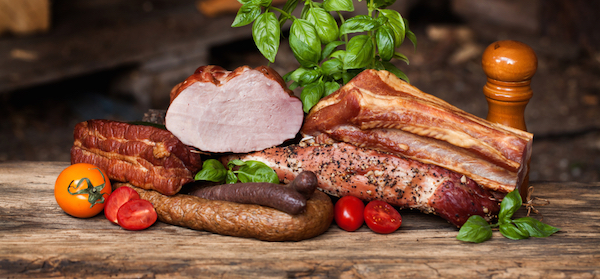When it comes to giving yourself the best chance of avoiding cancer, particularly bowel cancer, must people forever forsake the sausage, ham, salami and steak, and skip the bacon?
“Bangers and mash” has been a staple of the Australian dinner table for generations, while the success of many a school fundraiser has been buoyed by the humble sausage sizzle.
So it was with some alarm that Australians met the recent news from the World Health Organization that sausage, bacon and other processed meats cause cancer – and red meat probably does, too.
The news came after an international panel of 22 experts reviewed decades of research on the links between such meats and cancer.
So when it comes to healthy eating and giving yourself the best chance of avoiding cancer, particularly bowel cancer, must people forever forsake the sausage, ham, salami and steak, and skip the bacon-and-egg breakfast?
No, says Jean Hailes dietitian Anna Waldron. As with all dietary matters, the key to maintaining good health lies in moderation.
Anna says it is recommended that processed meat products “are not eaten on a regular basis.”
“The consumption of red meat and cancer risk has been discussed a lot in recent times,” says Anna. “In regards to red meat and cancer, there is conflicting evidence.”
The Australian dietary guidelines recommend no more than 455g of red meat per week. The recommended serving size at one sitting is 65–100g. So spreading your servings of lean red meat across three to four meals a week is ideal, rather than consuming one enormous piece of meat in a sitting. Bulk up your plate with a range of colourful vegetables instead.
Of course, there are some benefits to eating red meat in moderation. It’s a great source of important nutrients such as iron, zinc and vitamin B12.
Limiting your intake of red and processed meats will also do more than just reduce your risk of cancer – it will also help protect against chronic illnesses such as cardiovascular disease (CVD), which includes diseases of the heart, veins and arteries.
And while many people think CVD is more likely to be associated with men, it is in fact the biggest killer of women. CVD is responsible for half of all female deaths in Australia.
Almost 40 per cent of Australians over the age of 45 have two or more chronic diseases, according to recent data from the Australian Institute of Health and Welfare. CVD and arthritis are the most common two conditions to occur together for people over 45.
Most people can make a few improvements to their lifestyle fairly easily to help bring down their risk of developing most chronic diseases. Cholesterol, blood pressure and weight can all be influenced by food choices and physical activity levels. Eating a range of nutritious foods and moving more will make you feel healthier, manage your health conditions and help you live longer.
Find more information on important nutrients and learn what foods to eat for optimal health at Jean Hailes for Women’s Health.
Published with the permission of Jean Hailes for Women’s Health
1800 JEAN HAILES (532 642)

